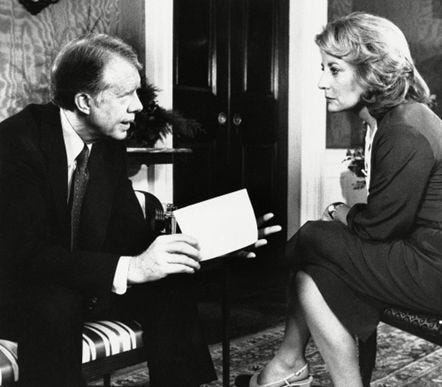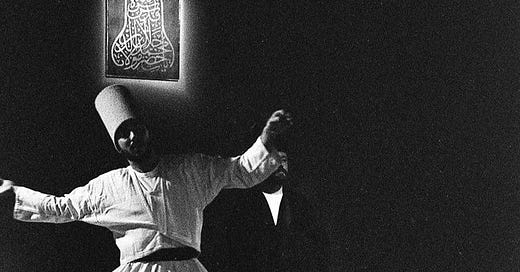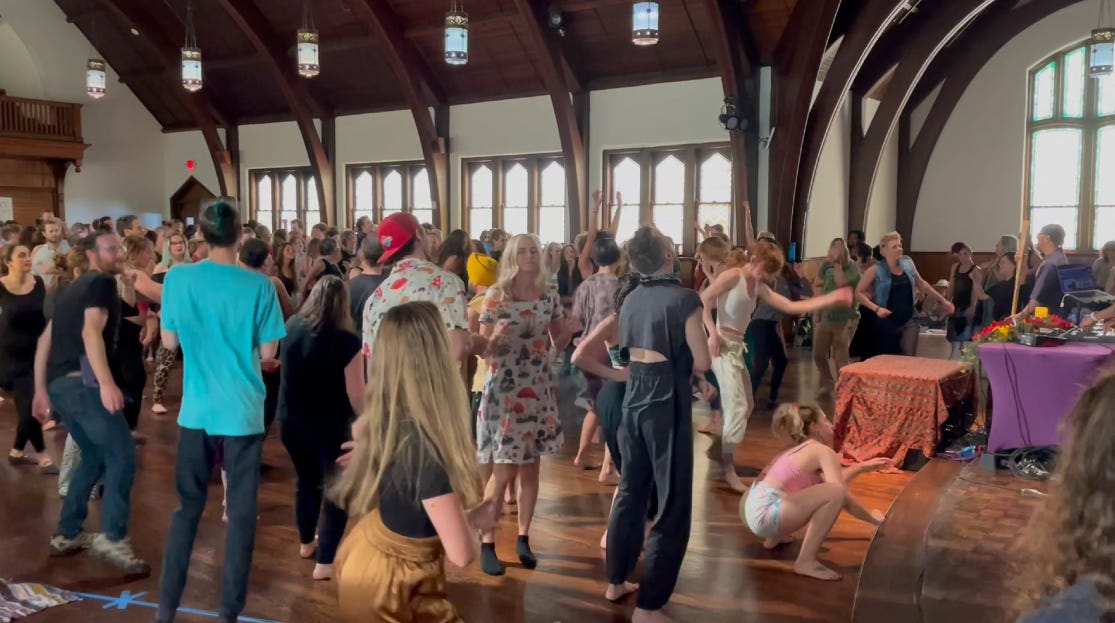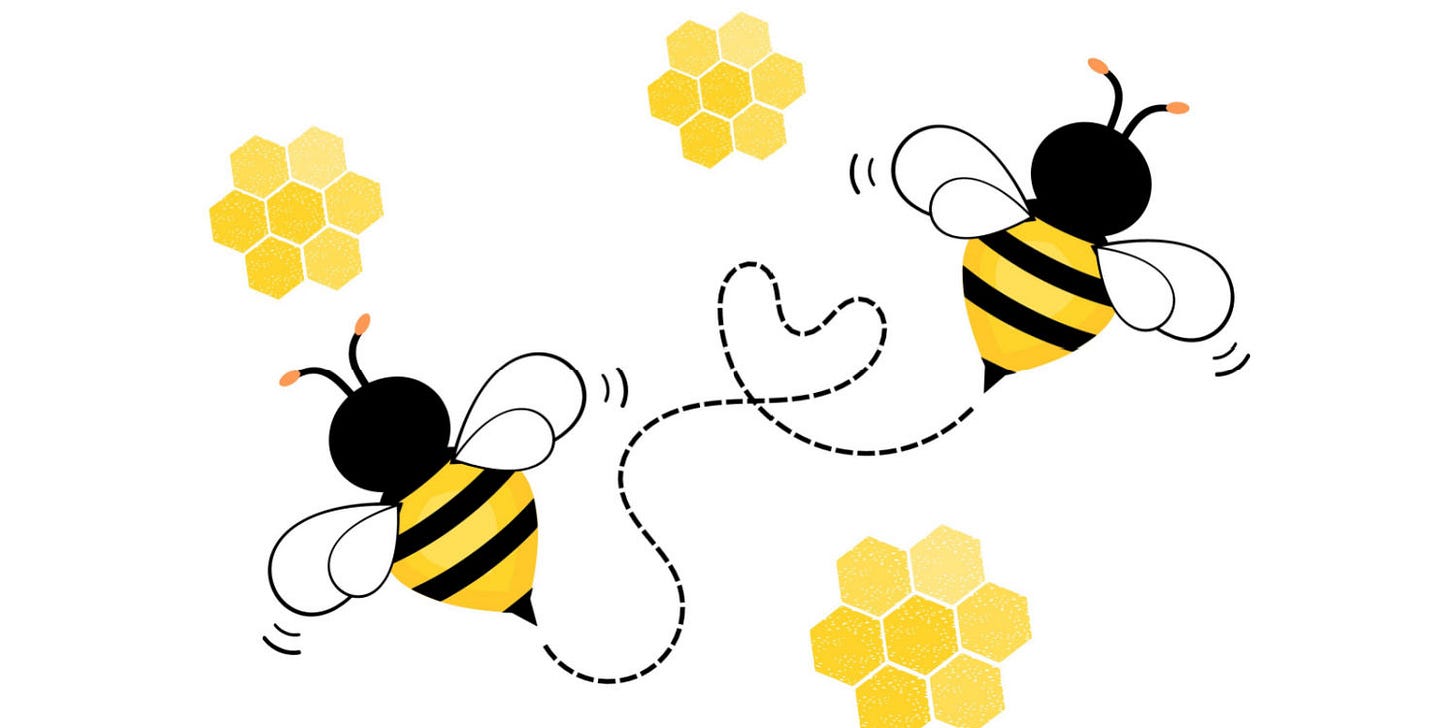In 1976, Suleyman Dede, the shaykh of the Mevlevi dervishes, arrived in Los Angeles from Konya, Turkey, to proclaim, “I have come to plant the seed of Rumi in America.”
We were young aspiring Sufis charged with a mission — to spread Rumi’s message of universal love across the land. In my role, staging performances of the Whirling Dervishes, I envisioned the Mevlevi seal glowing above the dance floor as we whirled to the cadence of the mystic beat.
I imagined the seal in 18-karat gold — real gold — illuminated by an ellipsoidal spotlight. All I had was a small insignia on a piece of letterhead. Still undeterred, I used a macro lens to photograph the seal, printed a very fuzzy image onto 8x10 paper in my darkroom, and then painstakingly repainted the calligraphy directly on the print.
I took my artwork to a lithographer who created an 18” x24” negative with a room-sized camera. Next, I consulted the Bible of the manifested world — the Los Angeles Yellow Pages (in its heyday, it came in two heavyweight volumes, A-M and N-Z) and thumbed to metal plating, bypassed the chrome bumper guys, and found someone in who gold-plated jewelry, heirlooms, and antique pieces.
I pulled into an industrial alley in East LA and waited in my VW bus until a white convertible Mercedes pulled up. Out stepped a flashy Iranian guy in a white suit, perfect hair, and too much gold jewelry. I noticed the vanity plate: “BIJAN.”
It turned out that Mr. Flashy was the young Bijan who became the Rodeo Drive designer who opened “the most expensive men’s store in the world.”
He became known for his luxury homes, private jet, Bugatti sportster, fragrance line, expensive divorces, and billboards up and down the Strip. The allure of his brand commanded stratospheric prices for container loads of cashmere sent to the Sultan of Brunei and others.
Bijan and I were worlds apart except for one thing: We were both drawn to the alchemy of charging metal ions in an electrochemical solution, one atom at a time, to transform base metal into gold. As an aspiring whirling dervish, I sought to transform subtle energies through my outstretched arms, whereas Bijan knew how to transform a $300 Smith & Wesson 38 revolver into a $10,000 designer piece by gold-plating the cylinder and adding his gold signature.




If you’re confused about where I’m going, I’m following Rachel Maddow’s trademark technique of telling a long shaggy dog intro before getting to the meat — in my case, the mystery of “Bondo.”
Bondo is the term Karen and I used to describe the capacity to form and maintain intimate relationships.
It’s a word seemingly missing from the English language, but one we used a lot, for example:
Bruce: “Karen, you seem to have Bondo. How is that?”
Karen: “My mother was hardly attentive. I spent the first year of my life in the crib while she took care of my sister. And my parents fought constantly. It’s a mystery.”
Bruce: “And I grew up with a narcissistic mom and emotionally aloof dad — also a mystery. I guess we’re made for ech other.”
Ten years after meeting Bijan, I joined a group of people learning French in anticipation of the visit of Omraam Mikhaël Aïvanhov
Aïvanhov (1900-1986) was a Bulgarian philosopher and teacher of Western esotericism who described the cosmic exchanges of energy between human beings and the universe.
I had no real interest in Aïvanhov or learning French, but this was pre-Karen, and the girls in the group were cute (a lonely Bruce reemerges as a theme).
Aïvanhov arrived in Los Angeles looking very much like Charleton Heston’s Moses. After lecturing in a monotone for two hours, he launched into a topic that perked my ears — Spiritual Galvanoplasty. He explained how electroplating with a battery, solution, anode, and cathode could be compared to the forces of spirit, soul, mind, and heart of man. Spiritual galvanoplasty (electrotyping) works with these forces to create an energetic substance.
He described how an expectant mother nurtures the developing fetus by forming a connection to Spirit (battery) and nourishing the highest ideal for her child, an image of perfection in her heart to form gold in the solution of love. (If you read “Where’s Bruce?”, the expectant mother analogy describes my current “growing edge.”)
This very fine substance is Bondo — the cultivation of intimacy and being that grows between friends, lovers, and mother and child.
Three months into my “speed-grieving” (ha!), I stumbled onto a Bondo crisis that has become endemic to our culture. Axios called it “America’s Friendscape Crisis.” Using surveys, Axios found that in pre-Internet 1990, 33 percent of Americans reported having ten or more close friends. By 2021, the number of people with ten friends had plummeted to 13 percent. Today, one in eight Americans report having zero close friendships, compared to just 3 percent in 1990. Put differently, if you’re standing in line, someone in front of you has zero friends.
Before Karen’s passing, I didn’t give much thought to the ongoing maintenance of friendships for a reason. I functioned like the farmer who ran the tractor while the wife milked the cows — or, more accurately, I relied on Karen to milk the Bondo. It was a pretty good deal. I let her form and maintain our friendships while I sat at the head of the table at dinner parties. My dad was the same — inventing high fidelity for the world while my mom rallied the neighborhood.
With Karen’s passing and my heart breaking, I’m now alone bringing in the Bondo. Some may argue that Karen’s still in the background pulling the strings. My bigger issue is losing contact with the “very fine substance” that infused me for 38 years.
I don’t know how my fellow singletons survive without Bondo because Love is like oxygen. Oxygen (and presumably love!) transfers electrons through the electron transport chain within the mitochondria to produce ATP, our energy source for living.
ATP might even be listed on the Bondo label!
I apologize to any friends or lovers (past or future) for my current interest. I have become a bit of a behaviorist in my vigilant observation of humans. I have become fascinated by researcher/psychologist John Gottman, who famously predicted the marital success of young newlyweds. The Gottman Love Lab observed hundreds of couples, recording their facial expressions, heart rates, blood pressure, skin conductivity, and conversations. He discovered that successful couples maintained a “magic ratio” of five positive interactions to every one negative interaction (86 percent). If that number slips to a 33 percent positive rate, divorce is imminent

Gottman called these interactions “bids for connection,” which functioned as the fundamental unit of emotional connection.
Let that fundamental unit sink in. Like the quantum physics of love, something akin to a “love quark” is observable in the Love Lab.
Bids for connection are simple everyday gestures and conversations that signal a need for attention: “How was your day?” “Let’s wash the dog.” “I’d love a gelato.” “Wanna watch a movie?” A bid could also be a smile, a wink, or a hand on a shoulder. Yum.
What appears to be random pitter-patter is Aivanov’s sacred electro-galvanic process in action — forming BONDO!
Compare these two pictures of Barbara Walters interviewing Richard Nixon and Jimmy Carter. Barbara-left makes my heart ache.


I asked my friend Anahata if bids for connection translated into British culture.
“The Brits are renowned for making friends and connecting over the weather,” Anahata shared. “We endlessly discuss the downpour or the one that is coming. We lament, laugh, cry and dance and get to know what is in the heart of the passerby by commenting on the weather. These are bids for connection. When I connect with someone and the light bounces back and forth, that is nectar. I may never see them again, but when two souls touch, we are forever changed. The community of my heart is very happy in that moment.”
Finding myself on new terrain — milking the Bondo — I’ve become quite conscious of these bids for connection through dog walks, phone calls, text messages, my grief group, yoga class, and even this blog. I don’t keep a log, but incoming and outgoing bids register as blips on my screen.
On Sunday, I was invited by my yoga teacher to “SOL DANCE An Ecstatic Movement”— over 200 people in a free-form kinesthetic tribal gathering — an event I would have never dreamed of attending (I was twice the age of the older participants).
I held to my New Year’s vow to embrace every invitation to engage with humans in 2023. A second friend wanted to join me there, so boom-boom, two units of Bondo were added to my galvanic solution. Make that three units when I learned my second friend was turning 65 the next day, and I insisted on taking her to Chai Pani for lunch.
Every woman reading this thinks, “Bruce, why are you being so scientific? Just go with the flow!”
I’m curious about the alchemy of love, especially when, according to Axios, our culture produces more lead than gold. Plus, I’m “actively engaging” in my grief process, which means taking action.
Gottman’s Love Lab was created in 1986, so I wonder if “bids for connection” is an idea whose time has passed. The idea of bids seems like potshots — like Dick Cheney with a shotgun.
In contrast, I experience this alchemy as Being in Conversation rather than random bids. In Bruce’s Love Lab, the emphasis is on both Being and Conversation.
Bondo is formed through conversation, akin to “call and response.”
In music, call-and-response works like a conversation. A phrase of music serves as the “call” and is “answered” in a vocal line or instrumental riff. Here are some examples:
Lipps, Funkytown — the bleeping keyboard riff answers each vocal.
Marvin Gaye and Tammi Terrell, “Ain’t No Mountain High Enough” - The duo call and respond in a musical conversation.
Better yet, go to the undisputed King of Call and Response, the “Hi dee hi dee hi dee hi” in Cab Calloway’s “Minnie the Moocher.” Watch it, please.
If you grew up in the African-American church, the call and response of gospel music form an inseparable part of the experience. Responsive chants and ghazals exist in every culture.
You may have felt the visceral rhythm of call and response at your dinner table. Here’s a lively Italian scene from “Seven Superpowers,” a book I co-wrote with Dr. Maria Gilmour about parenting during her childhood:
“Maria, how was school?” my dad asked.
“My turn, my turn. I want to go first,” Mikey blurted.
“The coach made us run extra laps,” I said, “and two kids got in a fight at lunch.”
“What about me?” Mikey tried again. “I went with mom to the store.”
“Fight any dragons today, Dad?” Karen chirped in.
“Brian?” my mom prodded.
“I dunno, school.” Brian picked up his air guitar. “Baba-baba-bahh… Stevie Ray Vaughn, “Pride and Joy.” Learned the opening riff.”
“Wonderful,” Mom beamed, always stressing the upbeat.
“My turn, my turn,” Mikey insisted.
Welcome to my family dinner table. Sharing our day with the family was a big deal, but with four kids, two adults, and slurpy eating — there was always a side dish of chaos with the spaghetti. No one cared about the mayhem because the power of our family dinner was larger than life. It didn’t matter if I was riding my bike, climbing a tree, or listening to music with a friend, when the clock hit six, dinnertime pulled me like a magnet so I could race to my place around the table. We gave our blessing, passed the food, and ate as a family. I didn’t get up without permission and I cleared my place at the end.
When I share this story today, parents look at it me like I’m reciting a fairy tale or maybe some kind of freak. “Hey, I’m happy if my kid eats,” one parent confessed.
Free-flow, unfettered relating is not the norm in most childhoods and relationships. In Karen’s growing up, it was dangerous to “talk back” to an adult.
An ongoing conversation is the most tangible measure of friendship.
Call and response is more about staying connected than any frequency of contact. The experience of “we last spoke in college but picked up where we left off” signals a very slooow conversation that still remains alive in one’s heart. Few people track the hot-potato feeling when a “checking in” is indicated.
If you jerk the needle off the groove after “Hi dee hi dee hi dee hi,” you feel the energy hang uncomfortably, but it soon diminishes. In a conversation, I call this communicus interruptus, a form of ghosting that kills the formation of Bondo. If you want more Bondo, keeping the call-and-response juggling balls aloft nurtures a growing intimacy.
Consider these recent exchanges in my world. Lucy and I have known each other for years and enjoy a jokey Jewish Facebook relationship, but the ball got stuck:
Lucy: “Today is exactly 2 years since mom died…” [Two yearas ago, Lucy heroically and lovingly supported her mom through death.]
Bruce: “Good daughters are like gold. I have to make do with guys. Sending love.”
Lucy: “Bruce, I’ve been thinking of you a whole lot lately. I’m embarrassed to say I’ve become a bit reclusive and am trying to break out of it.”
Bruce: “How can I support you in coming out? [meant as a double entendre.]
Lucy: Oh gosh, I’ve been sitting here wanting to call you up to see how I could support you. Let me think on that, and I’ll send you a text…
Bruce: Let’s arrange a clandestine meeting… I await your text.
CRICKETS
Here’s another of many:
Margie: “Hi Bruce, Margie here. I’ve been following you on Facebook. Let me know a good time and I’d like to give you a call and just check in on you.”
Bruce: “This is a good time.”
Margie: “I’m in my exercise class for an hour or so now.”
Bruce: “Don’t text while on the bike. But please, call anytime.”
CRICKETS
Last Saturday, I was in a low place — sad from all the digital ghosting or maybe just the natural ebb and flow of grief. I put my go-to grief music on auto-repeat, the Ballad of Fuck All by Malcolm Middleton, and proceeded to weep — some delicious cleansing tears.
I sent out a text message and a link to my Grief support group:
“Hey, Grief advisors. I’m hanging with the “Ballad of Fuck All” tonight. Where I’m at. Tomorrow will be a different day.
CRICKETS
I upped the ante and posted to my 361 friends on Facebook:
“What’s on your mind, Bruce?”
“Thanks for asking, Facebook.”
“THE BALLAD OF FUCK ALL” by Malcolm Middleton
Because I was testing the Grief Support System and not a “real emergency,” I quickly deleted the post. But not before my friend Carol caught it like a hawk — her all-feeling AWACS system was watching the emotional horizons and messaged me:
Hi Bruce. I saw the Fuck All post and was commenting, then it vanished. I said, “sounds pretty low.” Did anyone come for you? Love you Brucie.” Carol
I quickly pivoted to put Carol’s mind at ease.
Hi Carol. I put it up 1) because I was listening to the song, and it resonated, and 2) to see if someone noticed -- and you did. Bless you. Took it down. Was having an existential moment. Thanks for reaching out. I’ve been navigating highs and lows -- mostly highs, but also highly frustrated in finding connection. Even at the level of people responding to texts etc. This used to be Karen’s role, so I am stumbling through this new role. I am finding some wisdom in the rhythm of this, but it’s still a ballad of fuck all. Love you.
If Karen had been here, she would have chided me, “Bruce, don’t expect people to be monitoring their phones, jumping at every bid for connection.”
And I would have replied, “Please let me have my experience. I’M SUPPOSED TO BE GRIEVING!”
Because this blog may become a book, I better come to a meaningful conclusion:
Who or what is the culprit?
I’ve pondered, “What is going on here?” and have come to five conclusions:
Digital communication has short-circuited our feeling nature. I tell how the wall phone in my childhood kitchen used to ring all day. “Can Bruce come out to play” “We’re going to the mall; wanna come?” There was no pre-texting of phone calls: “Are you free to talk?” We didn’t even have answering machines. In the pre-digital era, we had super-sensory powers and could “know” by the rrrrrring. “It’s Aunt Ruth.” And it was! I hope to give a class on how digital has changed us, but for now, compare a natural sound wave to the same wave digitally sampled (what we hear through devices).
We are still crippled by post-pandemic isolation. We don’t forget how to ride a bicycle but may have forgotten how to interact. We hunkered in our Covid pods, met via Zoom, worked remotely, and discovered the comfort of isolation. Have we become conditioned to a Bondo-free existence?
Because of personal trauma, interpersonal vulnerability carries too much risk. If you calculate the risk versus reward, why bother with other humans? Trauma seems ubiquitous.
We are living through worldwide PTSD. We face World War III, the end of U.S. democracy, and the collapse of the earth’s ecological systems. Even if you block all this out of your mind, the psychic pressure undermines your ability to open your heart.
Bruce has Saturn in Libra. My all-wise friend Suzy offered a mild rebuke. “Bruce, with your Saturn in Libra, you put a lot of importance on relationships. Not everyone is built that way. Some people hardly notice or care.” I wanted to argue, “Suzy, Bondo is like oxygen!” But Suzy may have a point.
I took a show of hands on Zoom last Sunday, and the consensus was “all of them.” Re-reading them (I’m digitally crippled, traumatized, with PTSD, and stunted by my chart), I see the cop-out — they all rob one of a sense of agency. There’s always something or someone to blame.
If Bondo is a state of being, who is responsible for that?
Philosopher, author, and scholar Jacob Needleman focused on the “cultivation of being.” For cultivation of being, you can substitute Bondo, Aivanov’s “energetic substance,” building a soul or any alchemical gold that suits you.

Needleman wrote:1
“The effect of advancing technology, for all the material promise it offers the world (along with the dangers, of course) is but the most recent wave in a civilization that, without recognizing what it is doing, has placed the satisfaction of desire above the cultivation of being.”
Let me add: If you belong to an esoteric school, work with a therapist, engage your growing edge, or face the hard stuff with a partner, that inner work cultivates being. Needleman continues:
“The deep meaning of many rules of conduct and moral principles of the past – so many of which have been abandoned without our understanding their real roots in human nature – involved the cultivation and development of the uniquely human power of attention, its action in the body, heart and mind of man.”
In a different era, a visitor would arrive at the door at the appointed hour and place a calling card on the servant’s tray. The card would be taken to the master or missus who received you for conversation. This was a “rule of conduct.”
Do we have any rules of conduct today? My current rule is to respond to all bids for connection — including ecstatic dance.
“To be present, truly present, is to have conscious attention. This capacity is the key to what it means to be human.”
I define Bondo as a “capacity,” so I heartily concur with Needleman that conscious attention must be built.
“It is not, therefore, the rapidity of change as such that is the source of our problem of time. It is the metaphysical fact that the being of man is diminishing. In the world as in oneself, time is vanishing because we have lost the practice of consciously inhabiting our life, the practice of conscious attention to ourselves as we go about our lives.”
Last night, I attended a jazz concert with one of my “grief advisors.” The “diminishing” regard for the audience experience was shocking — horrific sound, bad lighting, sloppy musicianship, and a vocalist devoid of being. Even though the tickets were expensive, I saw my companion fidgeting. “You wanna leave?” “Oh, please, yes!” And we were off.
Time is vanishing in today’s jacked-up news cycle and instantaneous world. Despite millions of voices on Twitter, the conversation is boiled down to two viewpoints. We problem-solve by bullying, ghosting, subverting, and even genocide. If we can’t hang in the nuance, how can we inhabit the “barzakh” — the space in-between?
The barzakh lives in the nuance — between lover and beloved, yin and yang, and God and human. It can’t be reconciled as black or white or sampled as a 1 or a 0. This is Bondo — where love and relationship are born.
The lie of Bondo is that it comes in a jar, but it is a living substance formed each moment, like bees making honey.
Yes, Karen and I were making honey, but it wasn’t some magical relationship. I was challenged to stretch, embrace her reality, and abandon my sacred cows — because she was milking the ones that mattered.
by Jacob Needlman, excerpted from "Time and the Soul."











